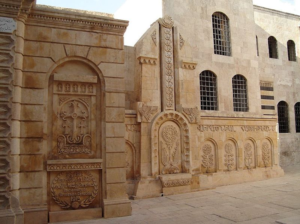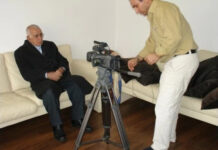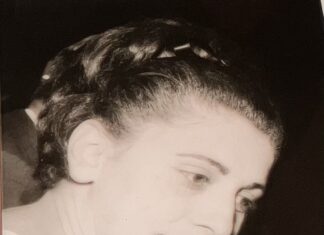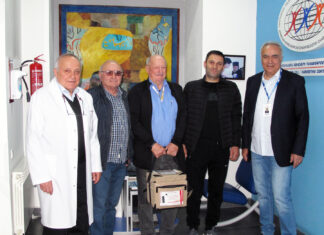By Aram Arkun
Mirror-Spectator Staff
BELMONT, Mass. — The terrible torment of the Syrian Armenians is frequently in the news, at least in the Armenian media, recently, but few know much about the history of the Aleppo Armenian community. Dr. Elyse Semerdjian, a specialist in early modern Ottoman history and Syria, recently attempted to change this situation. She presented a PowerPoint lecture on October 9 at the Belmont, Mass., headquarter of the National Association for Armenian Studies and Research (NAASR), providing background to the history of the community starting in the early modern period. Marc Mamigonian, NAASR’s Director of Academic Affairs, introduced her, and approximately fifty to sixty people were in attendance.
Semerdjian is Associate Professor of Islamic World/Middle Eastern history at Whitman College in Walla Walla, Washington, and in spring 2013 she was the Ara and Edna Dumanian Visiting Professor in Armenian Studies in the Department of Near Eastern Cultures and Languages at the University of Chicago. Semerdjian is the author of “Off the Straight Path”: Illicit Sex, Law, and Community in Ottoman Aleppo (Syracuse University Press, 2008) and several articles on gender, non-Muslims, and law in the Ottoman Empire. With a PhD in history from Georgetown University (2003), Semerdjian has received a Fulbright award twice. She has spent some eleven years working in the Syrian archives. Currently she is writing on the collective memory of the Armenian Genocide in Turkey and Syria.
Semerdjian pointed out that most Armenians think of the Aleppo Armenians as immigrants from the twentieth century. This is because some 100,000 Armenians came by 1925, so that the majority of the Aleppo Armenians indeed are relative newcomers. However, the Armenians have had a presence in Aleppo for many, many centuries. When some Syrians declare that the Armenians are newcomers to the region, it is important to remind the world that this is not true—and this is where knowledge of earlier Armenian history can come in handy.










